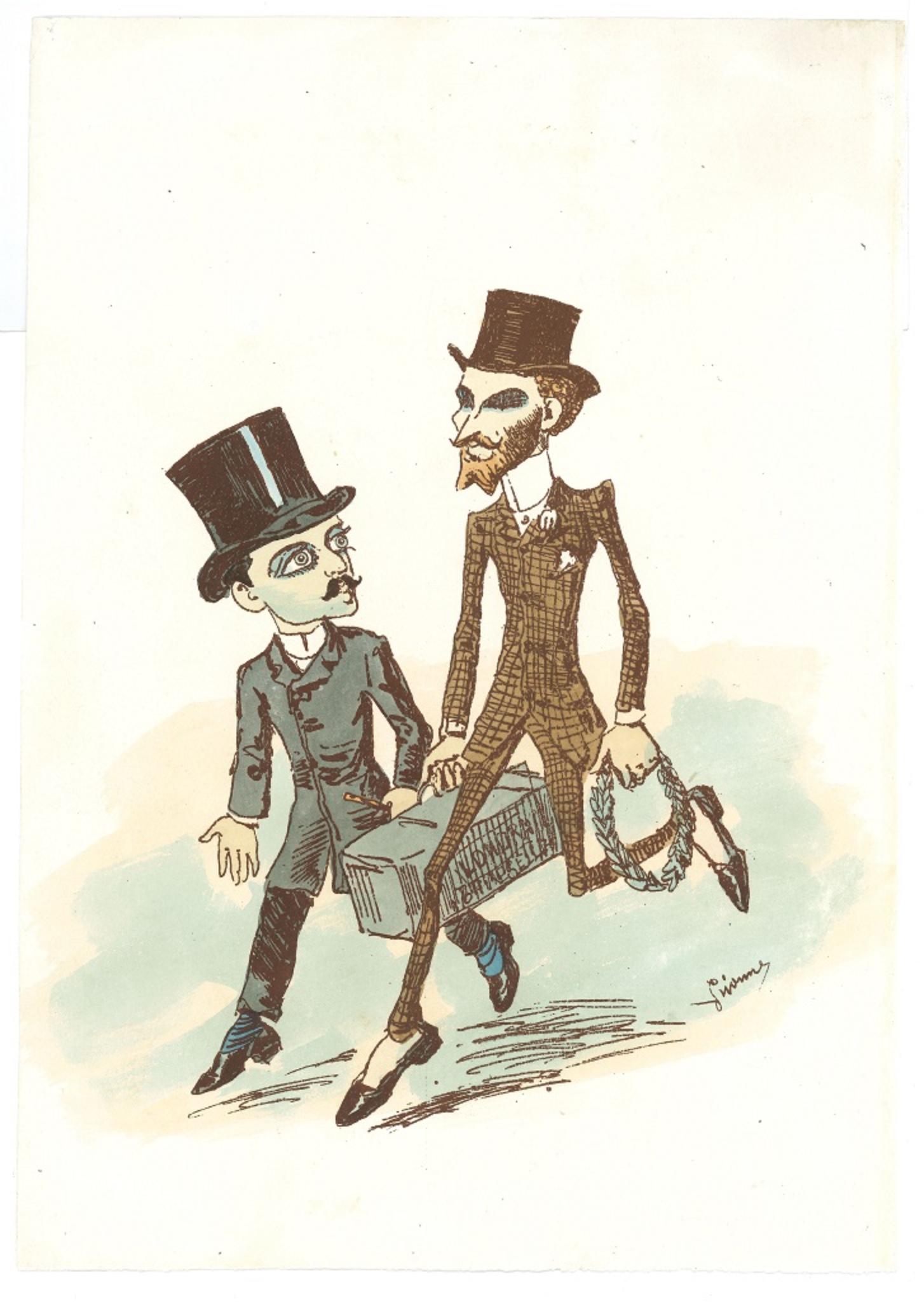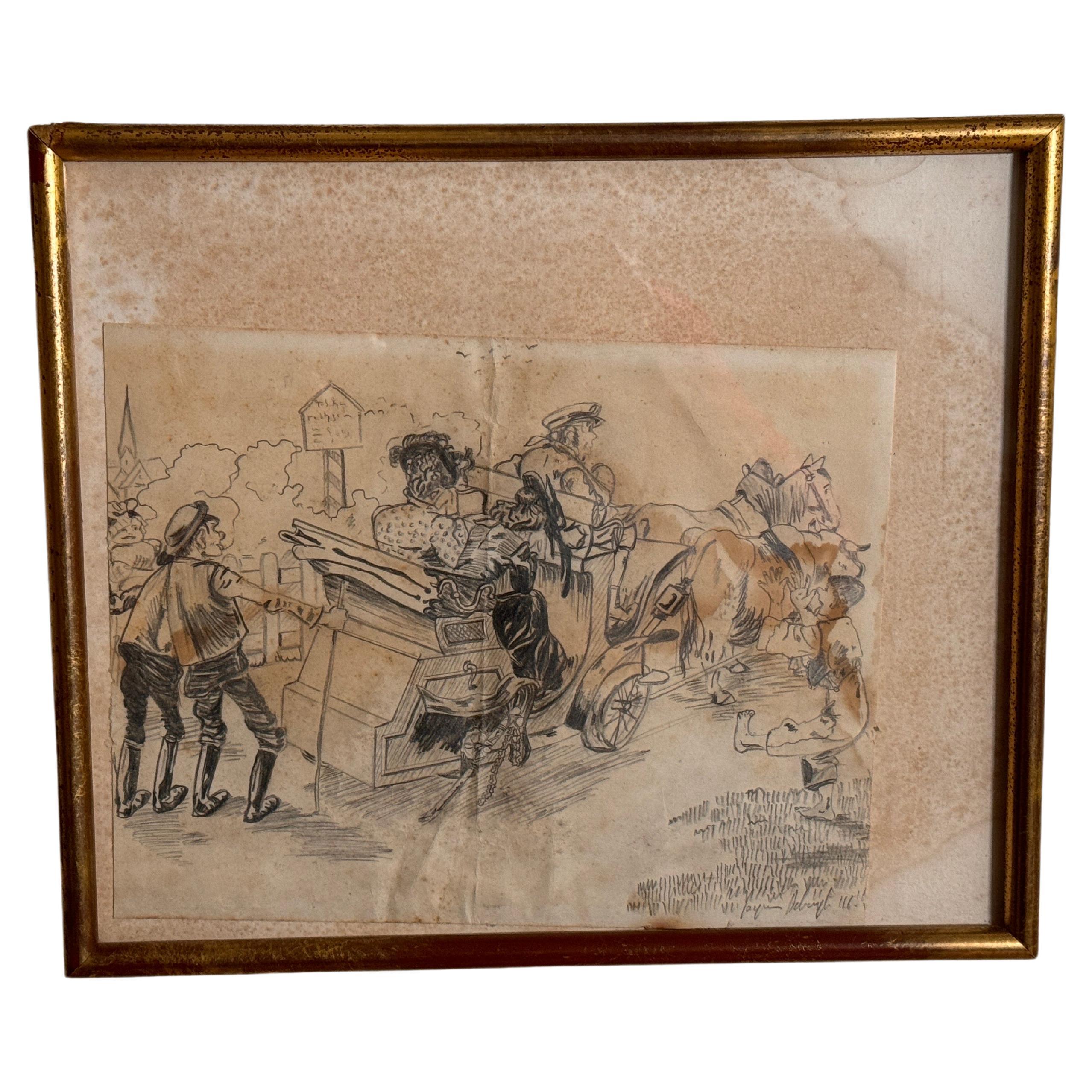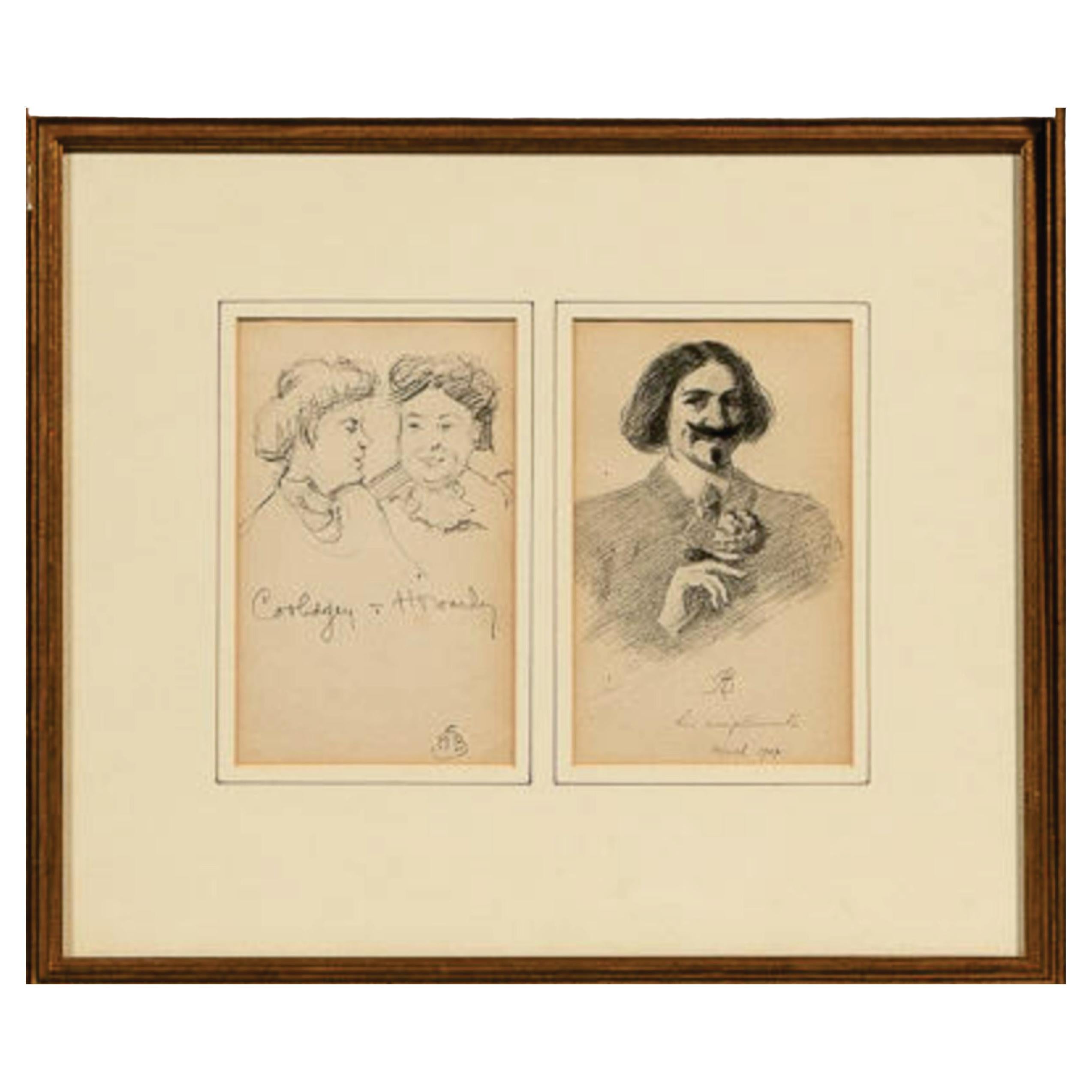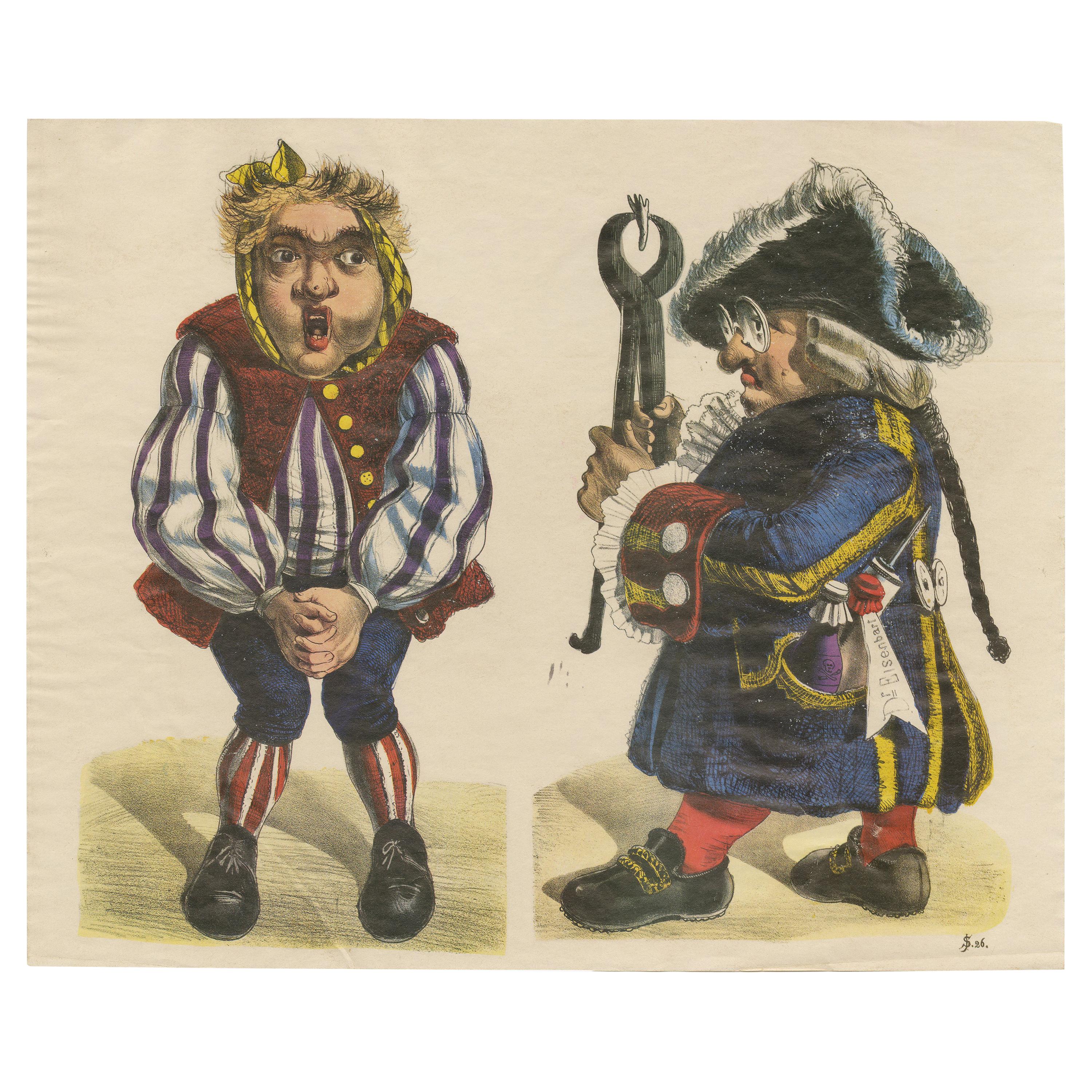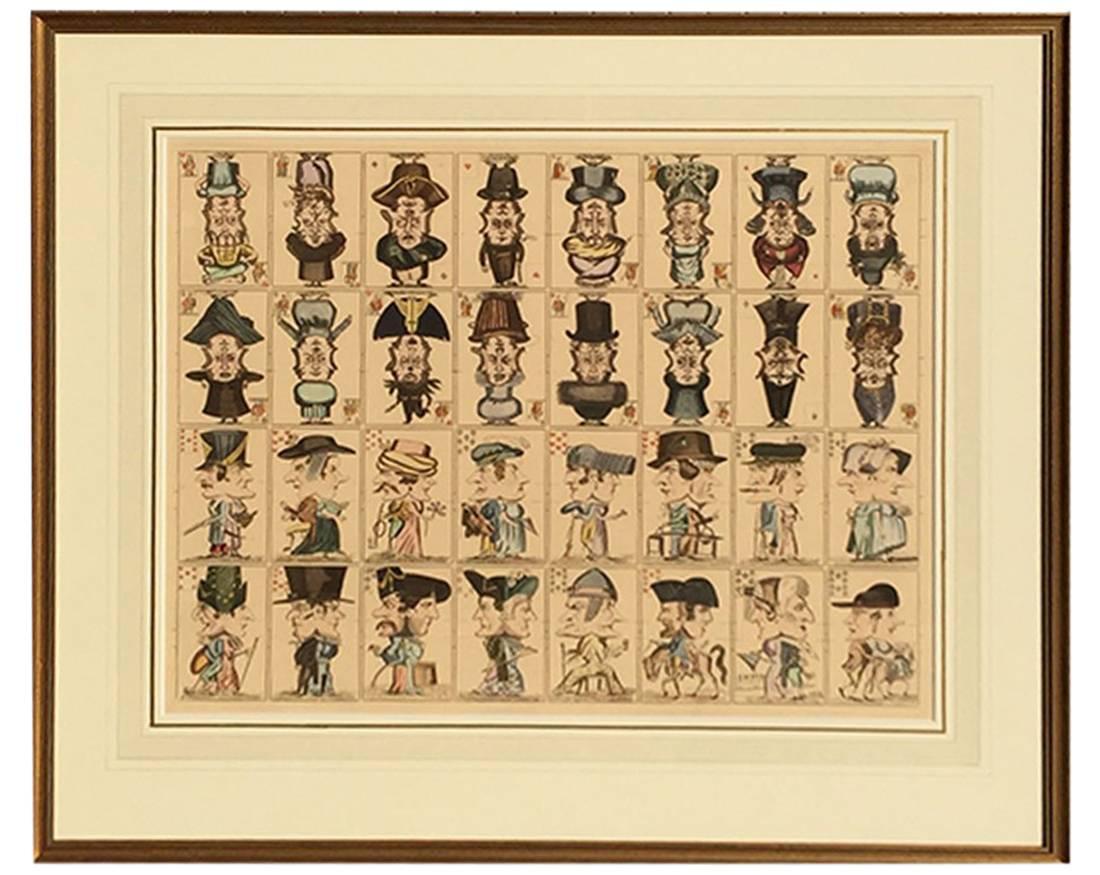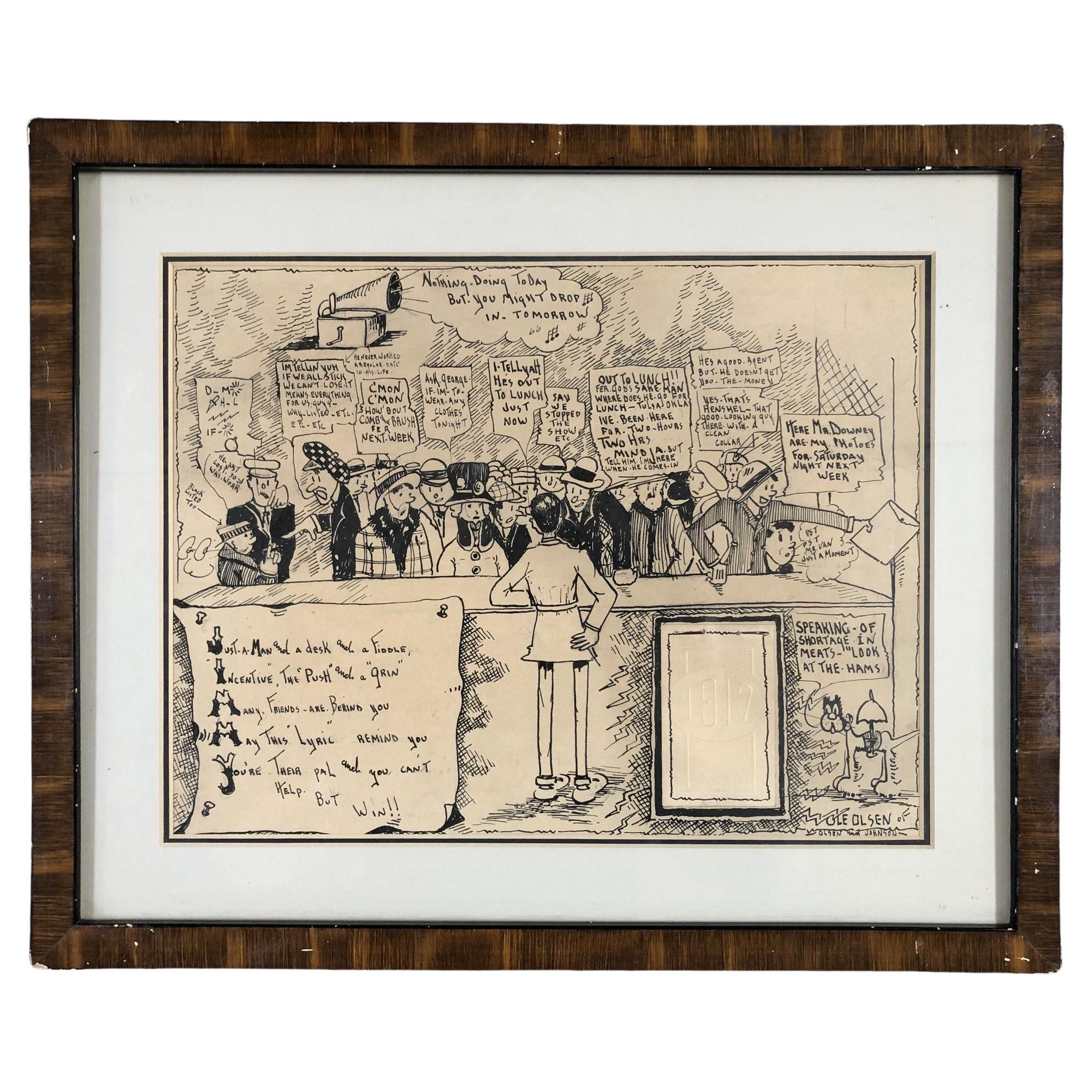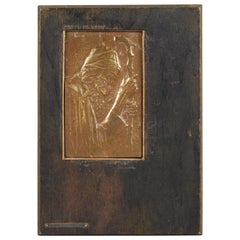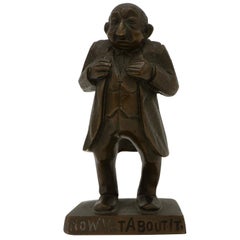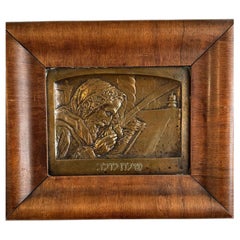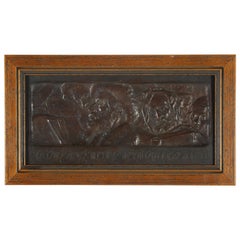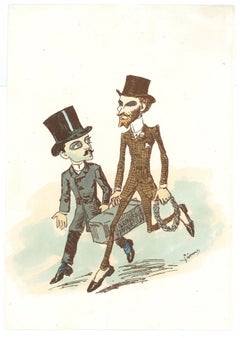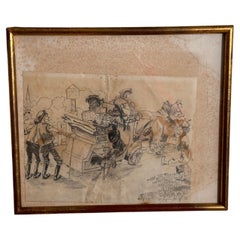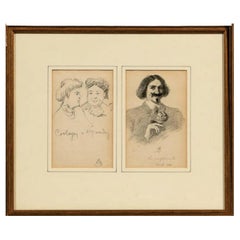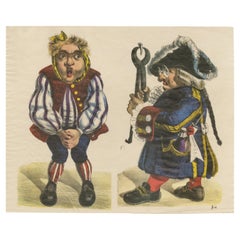Items Similar to Late 19th Century American Jewish Themed Caricature
Want more images or videos?
Request additional images or videos from the seller
1 of 8
Late 19th Century American Jewish Themed Caricature
$3,440
$6,77549% Off
£2,593.78
£5,108.3849% Off
€2,988.96
€5,886.7049% Off
CA$4,772.21
CA$9,398.7649% Off
A$5,347.24
A$10,531.2649% Off
CHF 2,783.44
CHF 5,481.9249% Off
MX$65,415.20
MX$128,833.7249% Off
NOK 35,330.62
NOK 69,582.8349% Off
SEK 33,369.34
SEK 65,720.1549% Off
DKK 22,313.23
DKK 43,945.3949% Off
Shipping
Retrieving quote...The 1stDibs Promise:
Authenticity Guarantee,
Money-Back Guarantee,
24-Hour Cancellation
About the Item
American cartoon, USA, 1895.
Caption reads: 'A Natural Mistake. Ikenstein: "I vould like to ged a cheap drunk." Salesman: "Next door.'"
The cartoon is framed with American frame of the period.
- Dimensions:Height: 8.67 in (22 cm)Width: 10.63 in (27 cm)Depth: 0.4 in (1 cm)
- Materials and Techniques:
- Place of Origin:
- Period:
- Date of Manufacture:1895
- Condition:
- Seller Location:New York, NY
- Reference Number:1stDibs: LU5281219431532
About the Seller
5.0
Recognized Seller
These prestigious sellers are industry leaders and represent the highest echelon for item quality and design.
Established in 2006
1stDibs seller since 2020
130 sales on 1stDibs
Typical response time: Several days
- ShippingRetrieving quote...Shipping from: New York, NY
- Return Policy
Authenticity Guarantee
In the unlikely event there’s an issue with an item’s authenticity, contact us within 1 year for a full refund. DetailsMoney-Back Guarantee
If your item is not as described, is damaged in transit, or does not arrive, contact us within 7 days for a full refund. Details24-Hour Cancellation
You have a 24-hour grace period in which to reconsider your purchase, with no questions asked.Vetted Professional Sellers
Our world-class sellers must adhere to strict standards for service and quality, maintaining the integrity of our listings.Price-Match Guarantee
If you find that a seller listed the same item for a lower price elsewhere, we’ll match it.Trusted Global Delivery
Our best-in-class carrier network provides specialized shipping options worldwide, including custom delivery.More From This Seller
View AllEarly 20th Century Brass Plaque by Bezalel School Jerusalem
Located in New York, NY
Bezalel brass plaque depicting a Jewish elder next to the Western Wall, made in Jerusalem, circa 1920, bearing a small metal label engraved "Bezalel Jeru...
Category
Early 20th Century Israeli Decorative Art
Materials
Brass
$960 Sale Price
20% Off
Early 20th Century American Bronze Figurine of a Jewish Businessmen
Located in New York, NY
Bronze figurine of a self-satisfied, disapproving Jewish businessman with the caption: Now! Vot about it? (an imitation of the Jewish accent), heavy, cast bronze figurine...
Category
Early 20th Century American Historical Memorabilia
Materials
Bronze
$1,516 Sale Price
20% Off
Early 20th Century "Netilat Lulav" Bronze Plaque by Boris Schatz, Bezalel
Located in New York, NY
Massive bronze plaque depicting the act of "Netilat Lulav" that takes place during the Jewish holiday of Sukkot. The plaque was made and signed by Boris Schatz, who was part of the B...
Category
Early 20th Century Israeli Neoclassical Wall-mounted Sculptures
Materials
Bronze
$6,800 Sale Price
20% Off
Tisha B’Av, Bronze Plaque by Boris Schatz, Bezalel School Jerusalem
Located in New York, NY
Boris Schatz Bronze Plaque In high relief, expertly cast bronze. Depicting bearded men on the floor of the Synagogue reading kinnot (sad poems / elegies),...
Category
Early 20th Century Israeli Decorative Art
Materials
Bronze
$6,920 Sale Price
20% Off
Jews at Rachel's Tomb-Early 20th Century Bronze Plaque by Moshe Murro, Jerusalem
Located in New York, NY
Bronze plaque with a relife of the figures of three elderly Jews and young Jew with Rachel's Tomb in the background.
Made in Bezalel school, Jerusalem by Moshe Murro, circa 1915.
Si...
Category
Early 20th Century Israeli Decorative Art
Materials
Bronze
$1,940 Sale Price
20% Off
Early 20th Century Silver Plate Plaque by Bezalel School Jerusalem
Located in New York, NY
Bezalel silver plate plaque depicting Moses at Mount Sinai, made in Jerusalem, circa 1925, marked "Bezalel Jerushalem" in Hebrew and "Made in Palestine,...
Category
Early 20th Century Israeli Decorative Art
Materials
Silver Plate
$720 Sale Price
20% Off
You May Also Like
Caricatured - Original Lithograph - 19th Century
Located in Roma, IT
Caricatured is an original artwork realized by an artist of the 19th Century.
The author of this drawing used lithography and hand watercolor to compose this work.
Good condition a...
Category
19th Century Modern Figurative Prints
Materials
Paper, Lithograph
Caricature Drawing Representing Characters in a carriage France 20th Century
Located in Auribeau sur Siagne, FR
Caricature Drawing Representing Characters in a carriage France 20th Century.
Some fading in the paper, see Detailed Pictures.
Category
20th Century French Art Deco Drawings
Materials
Wood, Paper
$258 Sale Price
20% Off
Antique 2 Drawings by a Boston Artist, Signed, March 1909, D5
Located in Norton, MA
2 Drawings by a Boston Artist, Signed March 1909, D5
Two drawings of figures, two 7.25" x 4.65", signed March 1909, Framed (22.5" x 14.5") under glass.
Category
Antique 18th Century American Paintings
Materials
Wood, Paper
Antique Caricature Print of a Dentist 'c.1860'
Located in Langweer, NL
Original antique caricature print of a dentist called Dr. Eisenbart, published circa 1860. This is a so called catchpenny print or ‘centsprenten’ in...
Category
Antique Mid-19th Century Prints
Materials
Paper
$287 Sale Price
20% Off
19th Century Caricature Playing Cards
Located in Delft, NL
32 pieces caricature playing cards, 19th century
19th century Caricature playing cards printed on one page
32 pieces hand colored
Framed and behind glass
The size is 68 cm x 80 cm...
Category
Antique 19th Century British Decorative Art
Materials
Paper
Vintage Framed Pen Drawn Cartoon by "Ole Olsen" from comedians "Olsen & Johnson"
Located in Van Nuys, CA
Vintage Framed Pen Drawn Cartoon by "Ole Olsen" from comedians "Olsen & Johnson". $
This original pen-drawn cartoon depicts a crowd in front of a man on a ...
Category
Vintage 1940s Drawings
Materials
Paper
